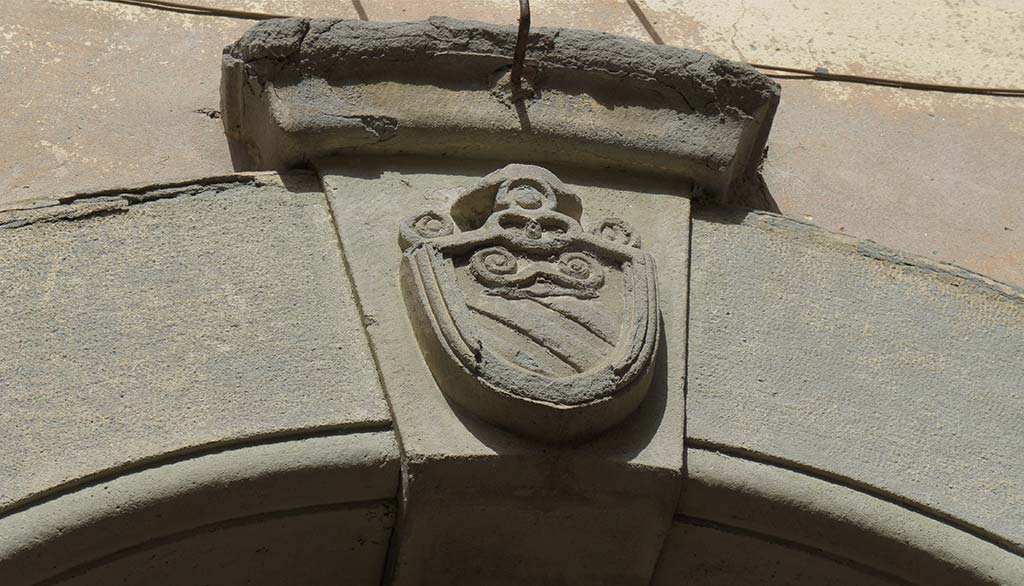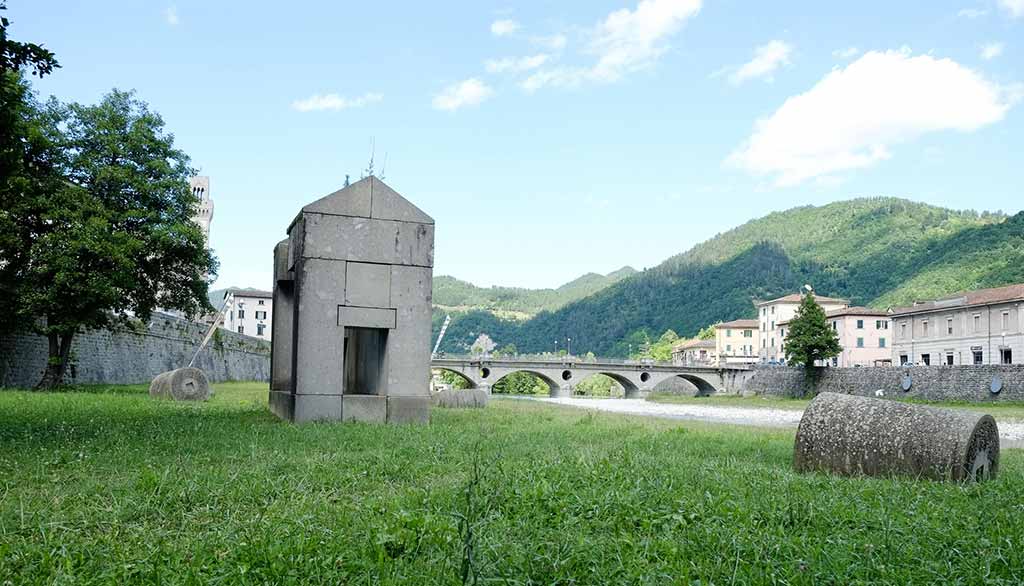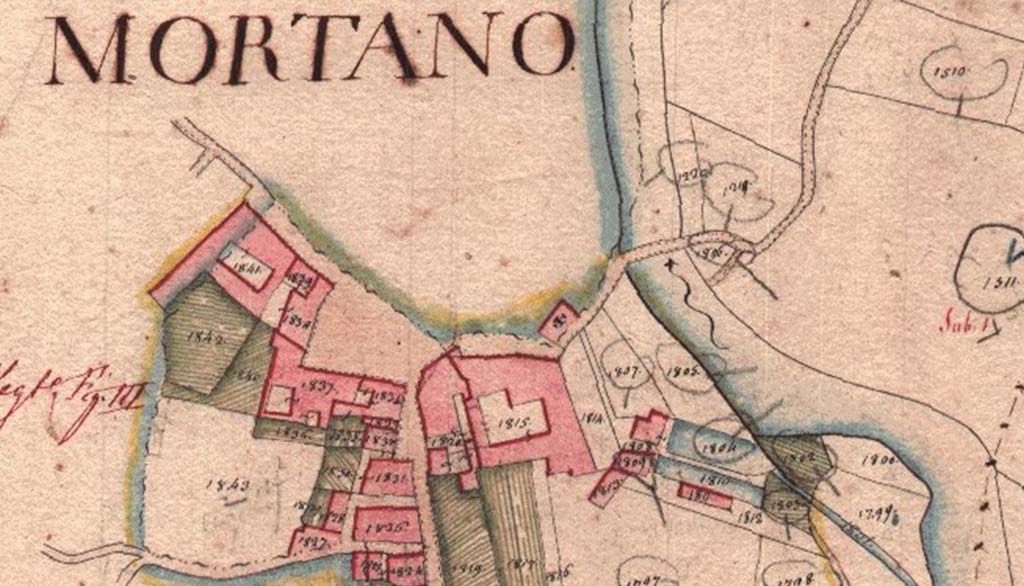History
The municipality that disappeared

Nowadays, Mortano is a district of Santa Sofia, but it has a distinct historical identity deriving from its status as an independent municipality in its own right up to 1923. It was then cancelled from the administrative system under the measures established by the Royal Decree of 30 December 1923 (published on 25 January 1924) when Cavalier Benito Mussolini, the newly appointed Prime Minister, abolished several “mini-municipalities” in Romagna and throughout the country (besides Mortano, the same fate befell Sorbano and Teodorano, respectively annexed to S. Sofia, Sarsina and Meldola). The suppressed municipality of Mortano was split between Galeata, Civitella and S. Sofia. In addition, as part of the overall territorial and administrative reorganisation, all the territories of the former Tuscan Romagna region (with the exception of Marradi and Firenzuola) passed from the province of Florence to that of Forlì. Those were other times, but it was typical of Mussolini’s decisiveness (he was then head of a coalition and not yet dictator) that the reorganisation decree was signed following decades of fruitless debate and discussion. In fact, Mortano, although an ancient and independent municipality, had for decades endured the influence of the neighbouring and stronger Santa Sofia. Factors related to economics, population dynamics, and political and cultural representation all favoured an aggregation that, due to infighting and collective resistance dating back to 1861, struggled to materialise.
Mortano, an independent municipality

As Emilio Rosetti wrote in his seminal work “La Romagna. Geografia e storia” (Geography and History of the Romagna Region), in 1895, Mortano was part of the district of Meldola, which, in turn, belonged to Civitella, under the district and province of Forlì and the dioceses of Sarsina, Bertinoro and Borgo San Sepolcro. It comprised a largely mountainous area of 5,320 hectares with a population of 1984 spread over 11 centres or hamlets (Mortano, Bucchio, Buggiana, Cigno, Collina di Pondo, Crocedevoli, Raggio, San Giacomo di Meleto, Seguno and Spinello), the latter being the most populous with no less than 665 residents. The central quarter of Mortano had only 183 inhabitants and, in fact, was considered a suburb of Santa Sofia. The coat of arms of the municipality of Mortano di Pondo (located on the right bank of the Bidente River) was much older than that of Santa Sofia. It had belonged to the Papal States until the Unification of Italy, while Santa Sofia had been governed by the Medici and later by the House of Lorraine in the Grand Duchy of Tuscany, belonging to the Department of the Arno. Mortano, on the other hand, came under the Department of the Rubicon and was not to become an independent municipality until May 1811, thanks to the Napoleonic administration, which had determined its separation from Galeata. As early as 1828, the municipality of Mortano was called Pondo because the Rocca di Pondo (now a ruin in the village of Collina di Pondo) was initially its administrative centre.
The feudal wars

Long feudal wars and, above all, recurring earthquakes (in particular the devastating one of 1661) convinced the Aldobrandini (who succeeded the Malatesta of Sogliano and, in turn, the Ubertini in governing the fiefdom) to choose Mortano Castle as their family residence and administrative centre. Of uncertain origins, Mortano (perhaps a former Roman proedium) welcomed the descendants of the famous Uguccione della Faggiola, a rich and powerful family originally from nearby Arezzo and who resided in Mortano until their demise in the late 19th century. No documented information exists, but the last heir of the famous family, Ilario Fabbri della Faggiola, who died in 1859, is buried in the Church of the Crucifix in S. Sofia, a clue but nothing more. Pondo was mentioned in the 1371 Chronicle by Cardinal Anglico de Grimoard. Its castle was destroyed in 1401 by Jacopo Salviati, the Captain of the Republic of Florence. In 1527, troops led by the Constable of Bourbon passed through the area on their way to attack Rome; a minor clash occurred during an attempted siege, resulting in a few casualties. The Landsknechts mercenary troops then vented their rage on Corzano, which they razed to the ground. The castle of Pondo was almost completely destroyed again in the late 16th century, and the fiefdom was ceded to Giovanni Andrea Pamphili Doria Landi at the end of the 18th century. The community of Pondo evolved into the municipality of Mortano, which was founded when the administrative jurisdiction was transferred there, the seat of local government being distributed among various buildings located in what are today known as Mortani and via Spinello.
Outlying buildings that spanned state borders

Certain buildings marked borders in a way that actually facilitated smuggling. An example of a divided property is the ancestral home of the Fontana family, which no longer exists. For centuries, this palazzo straddled the border between the Papal States and the Grand Duchy of Tuscany, with the separation line running through the building and even dividing individual rooms. Simply by moving between rooms, you passed into another state, where you were obliged to use salt from Volterra if you were in Tuscany or the alternative extracted from the salt pans of Cervia if you were in the Papal State. Similarly, notarial documents had to be drawn up by relying only on the authorised officials certified to practice in the applicable state. There was also a flourishing smuggling trade in linen, wool and cotton cloth from Tuscany to elude the “most audacious and forceful pontifical levies”. The name Cà di Ledre, which is still used today to refer to a cluster of houses at the end of Via Spinello, is a reminder of the challenges faced by those border communities. The historian Mambrini left us this chronicle: In 1548, Mario and Giovanni di Salvatore, Paolone and Angelino, Simone di Biagio and Vivo di Giovanni, all from Raggio, in the “Podesteria” (mayorship) of Galeata, complained to the Duke of Florence that, since they resided about half a mile outside his domain, under the rule of Count Giovanni Battista da Sogliano, when they needed to go to the mill, the castle, or the courthouse, they had to pass through houses, villas and courtyards where there gathered armed men of the court who had been outlawed from the lands of Tuscany. The said peasants of Raggio requested permission to bear arms to defend themselves should said outlaws or others attempt to assault them. The locality in question corresponds to what is still called Cà de’ Ladri today.
Of thieves and taverns
Subtle is the difference between thieves, but we know for certain that this area was the last inhabited outpost before the trail to Spinello began to climb, crossing the ford on the Rio Pondo. Up until a few decades ago, there were three “osterie” in Mortano, the oldest of which was the “Giona” tavern. In this classic taphouse that remained in business until mid-1970, patrons could bring their own food and dine on long wooden tables with wine sold by the landlord. The last to close were the “Patruno”, also in Cà di Ledre, and the one in Piazza Curiel, run by the Amadori family.
These borderlands were rife with bandits, thieves and deserters whose nasty mischief was aided by numerous escape routes to hideouts in the Spinello and Carnaio mountains and the Foresta della Lama.
Among Romagna’s most notorious 19th-century bandits, we recall Stefano Pelloni, known as “il Passatore”, Angiolo Lama, known as “Lisagna”, and Giuseppe Afflitti, the “Lazzarino”, all of whom were well-known in Mortano where the lawless environment encouraged their misdeeds.
